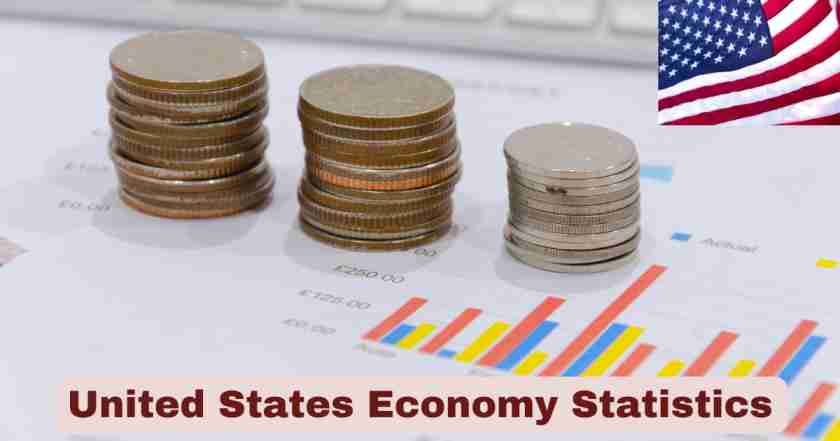United States Economy in the U.S. in 2025
The U.S. economy in 2025 is marked by a period of steady recovery, strategic adaptation, and cautious optimism. Following a volatile decade of global disruptions, inflationary pressures, and workforce realignments, the American economic engine is demonstrating resilience. Unemployment has stabilized around 4.1%, and inflation is moderating, with the Consumer Price Index (CPI) rising just 2.4% year-over-year. The labor market continues to support job seekers with consistent employment growth, while sectors like state government and health care emerge as reliable job creators. Wage and compensation growth are also keeping pace, ensuring that American workers benefit from real income gains amid a temperate inflationary climate.
Meanwhile, broader economic indicators—including GDP projections, PCE inflation, and benefit cost growth—underscore a stable, cautiously expanding economy. With GDP forecasted to grow between 2.9–3.2%, the Federal Reserve’s soft-landing efforts appear to be taking hold. Employers are responding by enhancing compensation beyond base salaries, contributing to a 3.6% annual rise in total compensation. As the U.S. economy adapts to ongoing global and domestic shifts, it remains anchored by strong consumer demand, favorable labor trends, and responsive monetary policies—setting the tone for sustainable progress in the years ahead.
Key Economic Facts in the U.S. 2025
| Economic Indicator | Latest Data | Time Period | Source |
|---|---|---|---|
| Unemployment Rate | 4.1% | June 2025 | Bureau of Labor Statistics |
| Inflation Rate (CPI) | 2.4% | May 2025 (12-month) | Bureau of Labor Statistics |
| Job Growth | 147,000 | June 2025 | Bureau of Labor Statistics |
| Wage Growth | 3.5% | March 2025 (annual) | Bureau of Labor Statistics |
| Benefit Cost Growth | 3.8% | March 2025 (annual) | Bureau of Labor Statistics |
| Total Compensation Growth | 3.6% | March 2025 (annual) | Bureau of Labor Statistics |
| PCE Inflation | 2.5% | February 2025 (12-month) | Treasury Department |
| Food Price Inflation | Higher than overall | May 2025 | USDA Economic Research Service |
The data presented above reflects the most recent official statistics from U.S. government agencies, providing a comprehensive snapshot of the American economy’s current performance. These figures demonstrate a labor market that continues to operate near full employment levels, with unemployment remaining below historical averages while wage growth keeps pace with or exceeds inflation rates. The 4.1 percent unemployment rate represents stability in employment conditions, while the 2.4 percent inflation rate indicates that price pressures have moderated from previous peaks.
Compensation trends reveal positive momentum for American workers, with total compensation rising 3.6 percent annually, driven by both wage increases of 3.5 percent and benefit cost growth of 3.8 percent. This balanced growth pattern suggests that employers are competing for talent through comprehensive compensation packages rather than relying solely on base salary increases. The 147,000 jobs added in June 2025 represents continued expansion in the labor market, though at a more measured pace than the rapid growth seen in previous recovery periods.
Employment Situation in the U.S. 2025
| Employment Metric | Current Data | Previous Period | Change |
|---|---|---|---|
| Unemployment Rate | 4.1% | 4.2% (May 2025) | Decreased |
| Labor Force Participation | Stable | Stable | No Change |
| Nonfarm Payroll Growth | 147,000 | June 2025 | Monthly Addition |
| Unemployed Persons | 7.1 million | March 2025 | Stable |
| Major Growth Sectors | State Government, Health Care | June 2025 | Positive |
| Declining Sectors | Federal Government | June 2025 | Negative |
The employment landscape in the United States during 2025 reflects a mature labor market operating at near-optimal capacity. The 4.1 percent unemployment rate has remained within a narrow band of 4.0 to 4.2 percent since May 2024, indicating remarkable stability in employment conditions. This consistency suggests that the labor market has reached a sustainable equilibrium where job seekers can find employment while employers can fill positions, though competitive pressures remain for skilled workers.
Sector-specific employment trends reveal interesting patterns in job creation and loss. State government and health care sectors have emerged as primary drivers of employment growth, reflecting ongoing expansion in public services and healthcare delivery systems. Meanwhile, federal government employment continues to decline, possibly reflecting efficiency initiatives or policy changes at the national level. The 147,000 jobs added in June 2025 represents healthy but moderate growth, suggesting that the economy is expanding without overheating or creating unsustainable labor shortages.
Inflation and Price Trends in the U.S. 2025
| Inflation Indicator | Current Rate | Previous Period | Annual Change |
|---|---|---|---|
| Consumer Price Index | 2.4% | 2.3% (April 2025) | 12-month basis |
| Monthly CPI Change | 0.1% | 0.2% (April 2025) | May 2025 |
| PCE Price Index | 2.5% | Previous quarter | 12-month basis |
| Food Price Inflation | Higher than CPI | Above average | May 2025 |
| Core Inflation Trend | Moderating | Declining | Ongoing |
Inflation dynamics in 2025 show encouraging signs of moderation after the significant price pressures experienced in recent years. The 2.4 percent annual inflation rate measured by the Consumer Price Index represents a meaningful deceleration from peak levels, bringing price growth closer to the Federal Reserve’s target range. The modest 0.1 percent monthly increase in May 2025 followed a 0.2 percent rise in April, indicating that inflationary pressures continue to ease across the broader economy.
However, inflation patterns vary significantly across different categories of goods and services. Food prices have risen faster than the overall inflation rate, creating particular challenges for household budgets and consumer spending patterns. The Personal Consumption Expenditures (PCE) price index at 2.5 percent provides another perspective on inflation trends, often considered by policymakers as a more comprehensive measure of price changes affecting American consumers. These moderating inflation trends support the view that the economy is successfully transitioning toward more sustainable price growth patterns.
Wage and Compensation Growth in the U.S. 2025
| Compensation Component | Growth Rate | Time Period | Coverage |
|---|---|---|---|
| Total Compensation | 3.6% | March 2025 | Annual increase |
| Wages and Salaries | 3.5% | March 2025 | Annual increase |
| Benefit Costs | 3.8% | March 2025 | Annual increase |
| Quarterly Compensation | 0.9% | Q1 2025 | 3-month change |
| Private Sector Focus | All civilian workers | Current | Comprehensive |
| Productivity Growth | Positive | 2025 | Output per hour |
Compensation trends in 2025 reflect a labor market where workers maintain significant bargaining power and employers compete aggressively for talent. The 3.6 percent annual growth in total compensation represents robust increases that exceed inflation rates, translating to real wage gains for American workers. The breakdown between wages and salaries at 3.5 percent and benefit costs at 3.8 percent shows that employers are investing in comprehensive compensation packages rather than focusing solely on base pay increases.
The 0.9 percent quarterly increase in compensation costs during the first quarter of 2025 demonstrates the ongoing momentum in wage growth, with seasonal adjustments showing consistent upward pressure on labor costs. This trend reflects both the tight labor market conditions and the need for employers to retain skilled workers in a competitive environment. The fact that benefit costs are growing slightly faster than base wages suggests that employers are increasingly using health insurance, retirement contributions, and other benefits as tools to attract and retain workers, recognizing that comprehensive packages create stronger employee loyalty and satisfaction.
Economic Outlook and Analysis in the U.S. 2025
| Economic Projection | Forecast Range | Source | Time Horizon |
|---|---|---|---|
| GDP Growth Rate | 2.9-3.2% | Economic Analysis | 2025-2026 |
| Inflation Trajectory | Moderating | Multiple sources | Ongoing |
| Employment Stability | Continued | BLS projections | 2025 |
| Wage Growth Sustainability | Positive | Current trends | Near-term |
| Policy Impact | Supportive | Federal Reserve | Ongoing |
The economic outlook for the United States in 2025 presents a picture of measured optimism tempered by awareness of ongoing challenges. Economic forecasters project GDP growth in the range of 2.9 to 3.2 percent, representing solid expansion that supports job creation and income growth without creating unsustainable imbalances. This growth trajectory reflects the underlying strength of the American economy while acknowledging the need for sustainable development patterns that can be maintained over the long term.
Current economic indicators suggest that the Federal Reserve’s monetary policy approach has succeeded in achieving a “soft landing” scenario, where inflation pressures ease without triggering significant unemployment or economic contraction. The combination of stable unemployment around 4.1 percent, moderating inflation at 2.4 percent, and positive wage growth at 3.5 percent creates conditions favorable for continued economic expansion. However, policymakers remain vigilant about potential risks, including global economic uncertainties, geopolitical tensions, and the ongoing need to balance growth with price stability in an increasingly complex economic environment.
Disclaimer: The data research report we present here is based on information found from various sources. We are not liable for any financial loss, errors, or damages of any kind that may result from the use of the information herein. We acknowledge that though we try to report accurately, we cannot verify the absolute facts of everything that has been represented.







